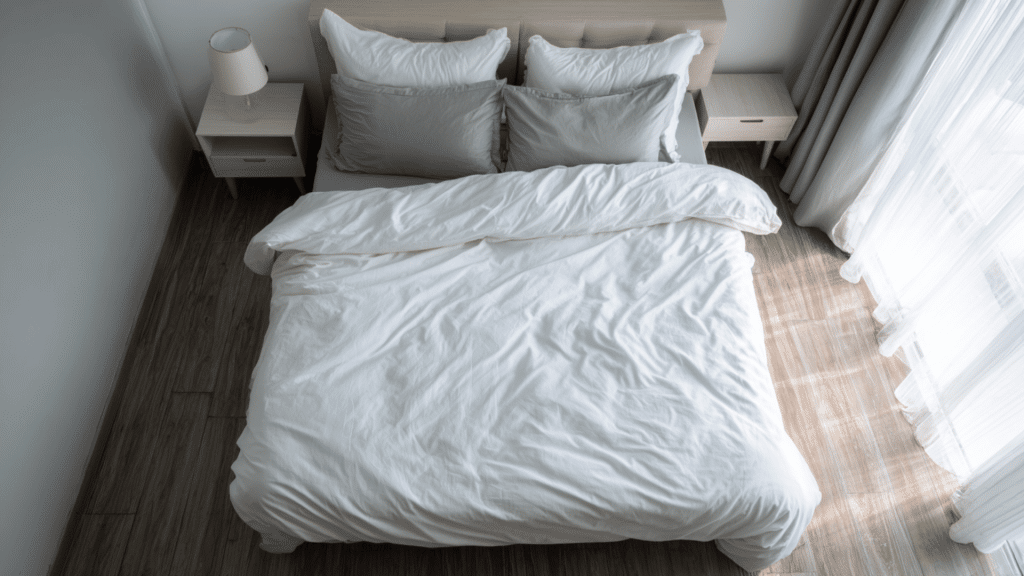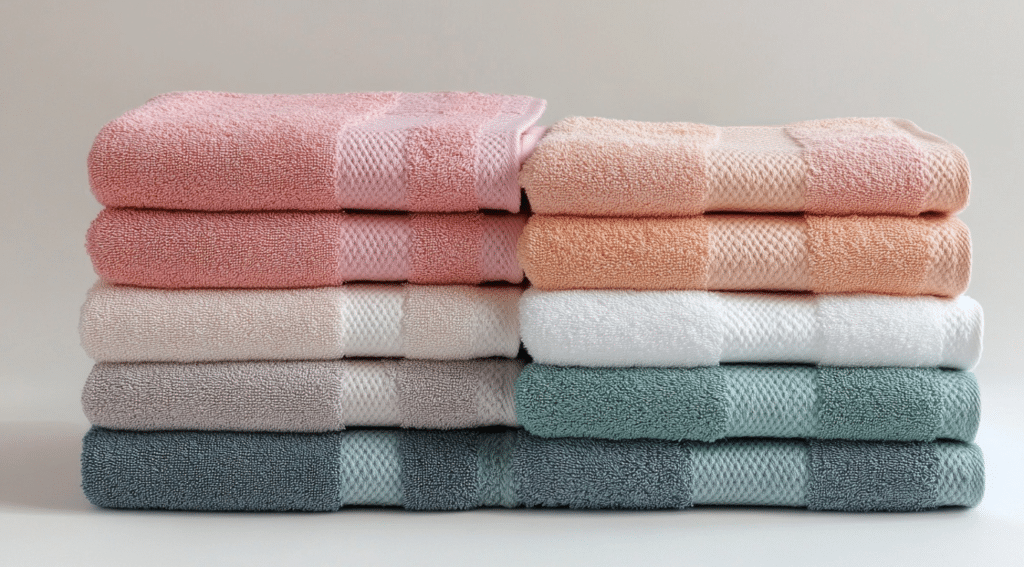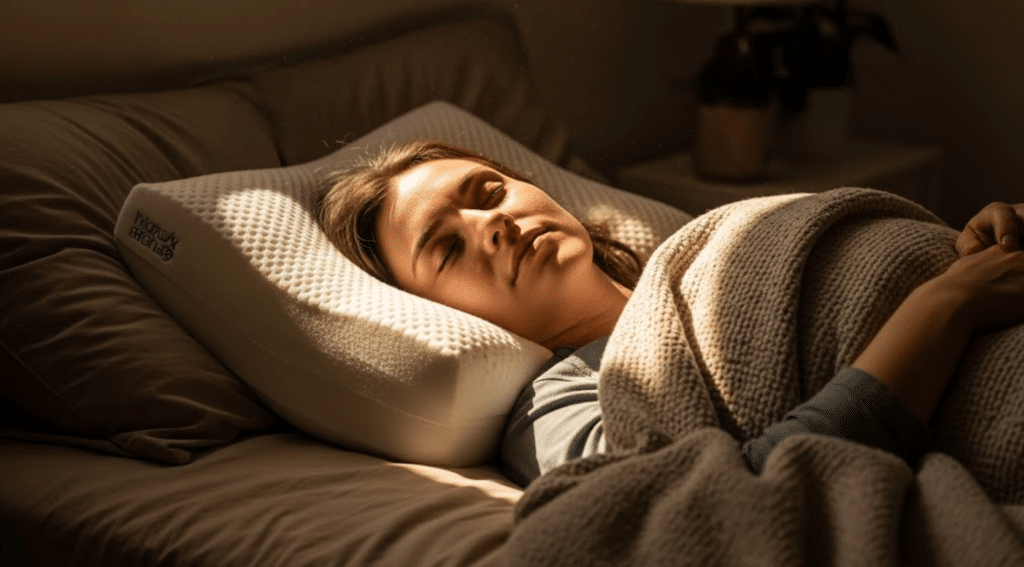Ever bought new sheets and realized they just don’t fit your bed right? I’ve had that happen, and it’s frustrating. You’re definitely not the only one. Picking the wrong size can lead to bunching, slipping, or corners that never stay put.
If you’re not sure how to get the right fit, don’t worry. I’ll walk you through everything you need to know in this post on bed sheet sizes. You’ll learn about mattress measurements, U.S. and international sizing differences, flat vs. fitted sheets, and the most common mistakes to avoid.
By the end, you’ll feel more confident choosing the perfect sheets for your bed. Let’s get your setup to look and feel just right.
How to Choose the Right Bed Sheet Sizes?
To obtain the correct sheet, you need the correct measurements. First, measure your mattress. Use a tape measure to check the width, length, and height. Don’t guess. Many mattresses, even with the same label, come in different sizes.
Next, determine the type of sheet you’re buying. Flat sheets are simple rectangles. They go on top and should be bigger than your mattress. You can’t tuck them in or let them hang.
Fitted sheets have elastic corners and wrap around the mattress. They need to match both size and thickness.
The biggest issue people run into is the height of their mattress. Some beds are tall because of padding or toppers. That means regular fitted sheets may not stay in place.
Most fitted sheets come in three depth options: standard (up to 12″), deep (13–17″), and extra-deep (18″ or more).
Always check the sheet’s label. Look for width, length, and pocket depth. Be especially cautious when purchasing sheet sets. Some include mixed sizes, or they skip the depth info. If the information isn’t clear, it’s better to skip it and find a set that lists full measurements.
U.S. Bedding Sizes and What They Mean
| Mattress Size | Dimensions (inches) | Best For | Common Uses |
|---|---|---|---|
| Twin | 39″ W × 75″ L | Children, solo sleepers | Kids’ rooms, bunk beds, small guest rooms |
| Twin XL | 39″ W × 80″ L | Taller teens and adults | College dorms, split King setups |
| Full (Double) | 54″ W × 75″ L | Solo sleepers wanting extra room | Guest rooms, small apartments |
| Queen | 60″ W × 80″ L | Couples or solo sleepers who like more space | Most common size for master and main bedrooms |
| King | 76″ W × 80″ L | Couples, families with kids or pets | Large bedrooms, maximum comfort for two people |
| California King | 72″ W × 84″ L | Tall individuals, couples wanting extra legroom | Long or upscale master bedrooms |
Different Type of Sheets for your Mattress
Flat Sheets

Flat sheets are easy. They don’t have corners or sides to match. They should be larger than your bed so you can’t tuck them in or let them hang. A flat sheet that’s too small can feel tight and leave your legs uncovered. One that’s too large might bunch up.
Most brands use similar sizes for flat sheets, based on the mattress they’re meant to fit:
- Twin: Around 66 x 96 inches
- Full: Around 81 x 96 inches
- Queen: Around 90 x 102 inches
- King: Around 102 x 108 inches
- California King: Around 108 x 102 inches
Some companies may add an inch or two, but these are good estimates. The main goal is to have enough width and length to tuck in at least 8–10 inches on all sides.
If you’re taller or use a thick blanket, you might prefer a flat sheet that’s a size bigger than your mattress.
Fitted Sheets

Fitted sheets are trickier because they need to wrap around your mattress snugly. Most have elastic bands in the corners or around the entire edge.
The two things you must match are:
- The length and width of the mattress
- The depth of the mattress (also called mattress height)
Many fitted sheets come in standard pocket depths. These are the most common ones:
- Standard pocket: Fits mattresses up to 12 inches tall
- Deep pocket: Fits mattresses 13–17 inches tall
- Extra-deep pocket: Fits mattresses 18–22 inches tall
To determine the correct pocket depth, measure the height of your mattress from the base to the top of the mattress. If you use a mattress topper, add that too.
Here’s a simple rule:
- If your mattress is 11 inches or shorter, buy a standard pocket
- If it’s 12–17 inches, go with a deep pocket
- 18 inches or more? You need an extra-deep pocket fitted sheet.
Sheets that are too shallow will slide off during the night. Sheets that are too deep may wrinkle or bunch up, especially in the corners.
Additionally, some fitted sheets list two sizes, such as 60 x 80 + 16″. The last number (+16″) indicates the depth of the sheet’s pocket.
U.S. Sheet Size Chart
Here’s a breakdown of mattress sizes, flat sheet sizes, fitted sheet sizes, and pocket depths. Use it to match your mattress with the correct sheets before you shop.
| Mattress Size | Mattress (W x L, in) | Flat Sheet Size (in) | Fitted Sheet Size (in) | Pocket Depth Range |
|---|---|---|---|---|
| Twin | 39 x 75 | 66 x 96 | 39 x 75 | 7–14″ |
| Twin XL | 39 x 80 | 66 x 102 | 39 x 80 | 7–14″ |
| Full | 54 x 75 | 81 x 96 | 54 x 75 | 7–17″ |
| Queen | 60 x 80 | 90 x 102 | 60 x 80 | 7–17+” |
| King | 76 x 80 | 102 x 108 | 76 x 80 | 7–17+” |
| Cal King | 72 x 84 | 108 x 102 | 72 x 84 | 7–17+” |
How to use this chart:
First, measure your mattress (including its width, length, and height). Use the mattress size row that matches your measurements.
Match your fitted sheet exactly in width and length, and make sure the pocket depth matches your mattress height.
For flat sheets, the size should always be larger than your mattress to allow room for tucking or hanging over the edge.
International Sheet Sizes: What to Watch Out For
If you’re shopping from a non-U.S. store, be careful. Sheet sizes outside the U.S. may not match what you’re accustomed to. A Queen bed in one country might be smaller or longer than in another.
Here’s a quick breakdown comparing common U.S., U.K., and EU mattress sizes so you can match sheets correctly when shopping internationally:
| Size Name | U.S. Size (in) | U.K. Size (in) | EU Size (cm) |
|---|---|---|---|
| Twin / Single | 39 x 75 | 36 x 75 (Single) | 90 x 190 |
| Twin XL | 39 x 80 | Not commonly used | 90 x 200 |
| Full / Double | 54 x 75 | 54 x 75 (Double) | 140 x 200 |
| Queen | 60 x 80 | 60 x 78 (King in U.K.) | 160 x 200 |
| King | 76 x 80 | 72 x 78 (Super King) | 180 x 200 |
| Cal King | 72 x 84 | Not standard in the U.K. | 200 x 200 or custom |
Tips:
- The U.K. “King” is closer in size to a U.S. Queen.
- The EU sizes are often longer than those in the U.S. and U.K. beds.
- Always check if the listing uses inches or centimeters.
- If your mattress is a U.S. size, purchasing international sheets may require a size up to ensure a proper fit.
Keeping these things in mind can help you avoid purchasing the wrong size, especially when ordering online from a different country.
What If Your Mattress Isn’t Standard?
Some beds don’t follow regular sizing. You might have an RV bed, a sofa bed, a round mattress, or an antique frame. In those cases, regular sheets won’t fit properly.
If your mattress has an odd shape or size, here’s what to do:
-
Measure width, length, and depth in inches and centimeters.
-
Write it down and double-check your numbers.
-
Search for brands or shops that make custom sheets.
-
Avoid one-size-fits-all options unless they specify a size range that fits your measurements.
Custom sheets cost more, but they fit better and don’t slip or wrinkle as much.
Common Mistakes to Avoid
It’s easy to make simple mistakes when buying bed sheets, especially if you’re not sure what to look for. Here are some common issues to watch out for:
- Guessing the size: Failing to measure the mattress can result in sheets that are either too small or too large.
- Skipping the depth check: Fitted sheets need to match the mattress height to stay in place properly.
- Twin vs. Twin XL confusion: Both are 39 inches wide, but Twin XL is 5 inches longer.
- Queen and King mix-ups: Not all Queen or King sheets are the same; some vary in width or length.
- Sheet set surprises: Some sets include mismatched sizes or skip listing pocket depth.
- Skipping reviews: Some brands shrink after washing or don’t match their size chart. Reading reviews helps avoid bad fits.
Avoiding these mistakes will save you time, money, and frustration, and help you get sheets that actually fit and feel great.
Wrapping Up
Getting the right bed sheet sizes can totally change how your bed looks and feels. I’ve learned that the hard way. Now that you know how to measure your mattress and read those size charts, picking the right sheets should feel a lot easier.
Just take a few minutes to double-check your bed’s width, length, and depth before you buy. I always check reviews, too, since fit and quality can really vary from brand to brand.
A well-fitted sheet means no slipping corners or messy mornings, and that makes a big difference. Keep these tips in mind next time you’re upgrading your bedding.
If you want more easy guides and smart product picks, take a look at the other blogs I’ve put together to help make your home feel just right.











